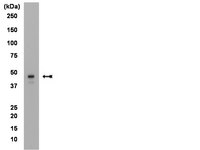Hematopoiesis from human embryonic stem cells: overcoming the immune barrier in stem cell therapies.
Priddle, Helen, et al.
Stem Cells, 24: 815-24 (2006)
2006
Show Abstract
The multipotency and proliferative capacity of human embryonic stem cells (hESCs) make them a promising source of stem cells for transplant therapies and of vital importance given the shortage in organ donation. Recent studies suggest some immune privilege associated with hESC-derived tissues. However, the adaptability of the immune system makes it unlikely that fully differentiated tissues will permanently evade immune rejection. One promising solution is to induce a state of immune tolerance to a hESC line using tolerogenic hematopoietic cells derived from it. This could provide acceptance of other differentiated tissues from the same line. However, this approach will require efficient multilineage hematopoiesis from hESCs. This review proposes that more efficient differentiation of hESCs to the tolerogenic cell types required is most likely to occur through applying knowledge gained of the ontogeny of complex regulatory signals used by the embryo for definitive hematopoietic development in vivo. Stepwise formation of mesoderm, induction of definitive hematopoietic stem cells, and the application of factors key to their self-renewal may improve in vitro production both quantitatively and qualitatively. | 16306149
 |
T (Brachyury) is a direct target of Wnt3a during paraxial mesoderm specification.
Yamaguchi, T P, et al.
Genes Dev., 13: 3185-90 (1999)
1999
Show Abstract
Wnt3a encodes a signal that is expressed in the primitive streak of the gastrulating mouse embryo and is required for paraxial mesoderm development. In its absence cells adopt ectopic neural fates. Embryos lacking the T-box-containing transcription factors, Brachyury or Tbx6, also lack paraxial mesoderm. Here we show that Brachyury is specifically down-regulated in Wnt3a mutants in cells fated to form paraxial mesoderm. Transgenic analysis of the T promoter identifies T (Brachyury) as a direct transcriptional target of the Wnt signaling pathway. Our results suggest that Wnt3a, signaling via Brachyury, modulates a balance between mesodermal and neural cell fates during gastrulation. | 10617567
 |












